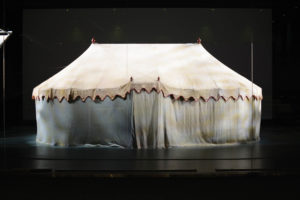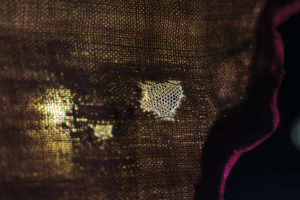
A significant artifact from the Revolutionary War, George Washington’s Headquarters Tent has been restored and is on display at the new Museum of the American Revolution. Just opened in Philadelphia, Pa., in April 2017, the museum tells the story of America’s founding through immersive gallery experiences, object theaters and recreated historical scenes.
The tent’s journey to the museum spans more than 100 years. In pieces, it was purchased in 1909 by Reverend Dr. W. Herbert Burk from Robert E. Lee’s daughter to be exhibited in the Valley Forge Museum of American History. In 2003, it was donated to the new museum along with the rest of Burk’s collection.
The process to preserve and prepare the 20-foot by 15-foot linen tent for display was complicated and required many hours of painstaking work. Textile specialists repaired 550 holes by placing fine netting around them and stitching the damage with polyester thread finer than human hair. Larger tears and a missing piece were addressed by making high-resolution images of the fabric and printing them on polyester with a digital inkjet printer.

Quite fragile, the tent could not withstand the tension required to erect it using the pole-and-rope system of the period. Structural engineers designed an umbrella-like aluminum and fabric structure to display it in a lifelike fashion. Similarly, rare-earth magnets were used to tether the tent walls to the top, rather than traditional iron hooks and eyes.
To ensure the tent remains a centerpiece of American history into the future, it is carefully protected behind shatter-resistant glass in a space that is climate- and light-controlled.
 TEXTILES.ORG
TEXTILES.ORG


